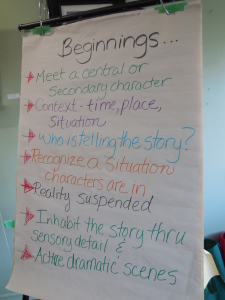What to Include in the Start of a Narrative
Here are some random thoughts about what to consider when getting set to write the opening chapter of your nonfiction narrative. For some tips on the pre-writing stage, leading up to writing that all-important opener, see our previous blog post: http://thescribes.ca/the-first-steps-to-writing-nonfiction/
- Give your readers some context, so they understand what’s about to happen – but not too much!
 Writing instructor Alice LaPlante (The Making of a Story) suggests you write the first chapter and then tear up the first three pages—and start from that point. This forces you to drop the reader into the middle of things.
Writing instructor Alice LaPlante (The Making of a Story) suggests you write the first chapter and then tear up the first three pages—and start from that point. This forces you to drop the reader into the middle of things.
- If you do start on the cusp of action, or in the thick of it—be careful not to give away the most dramatic moment in your narrative because the reader expects the action/tension to keep building from here.
- Use the opener to provide clues about the overall direction and theme of the book. Your ending is going to link back to things you set up here.
- Is there a bit of a mystery you can present, something to pique reader interest? (Don’t give so little detail, however, that it confuses. The idea is to make us want to read on.)
- A scene that relates to the action/narrative can be a great way to hook reader interest and to introduce the story and characters.
- A great opening device is to start at a distance, a wide angle lens view, and then narrow the focus to a specific situation.
- Set a tone and pace that you can maintain throughout.
- Let the reader know who is narrating this story; who the central character is; what the central problem is; the setting; and time.
Watch for the next posting, which delves into the finesse elements of writing chapter one.
